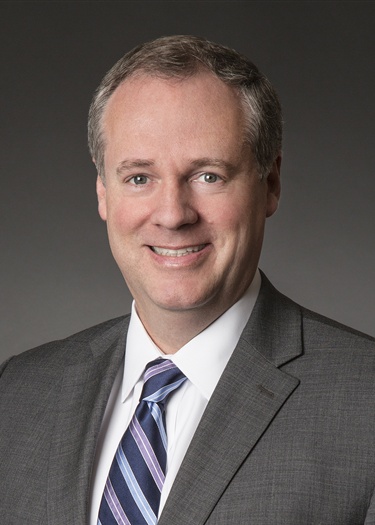On March 1, 2024, the U.S. Environmental Protection Agency (EPA) announced the Safer Communities by Chemical Accident Prevention Rule, which ushers in several changes to the Clean Air Act (CAA) Risk Management Program (RMP) (Final Rule or Rule). The Rule represents the latest salvo in a decadelong battle to amend the RMP program that stretches back to the Obama and Trump administrations. EPA’s new Final Rule reintroduces key changes from past rulemakings that never took effect. It requires owners and/or operators of covered processes to make significant changes to their preexisting RMP compliance plans, including to comply with more stringent requirements for accident prevention, emergency preparedness, and public disclosure of information related to accidental releases. The Final Rule is expected to be challenged by various interested parties.
The RMP requirements largely parallel the Occupational Safety and Health Administration (OSHA) Process Safety Management (PSM) program. However, EPA places emphasis on the prevention of accidental releases of regulated chemical substances and the consequences of those accidental releases on human health and the environment in surrounding communities, whereas OSHA focuses on employee safety at workplaces. EPA enforces RMP compliance through administrative, civil, and criminal enforcement, often in conjunction with the CAA General Duty Clause.1 In those enforcement proceedings, EPA may seek to impose the new obligations in the Rule before the formal compliance deadlines through negotiated consent decrees, a strategy the agency has used across a range of regulations, including prior iterations of the RMP regulation.
The Final Rule’s key changes include the following:
- Requires petroleum refineries, chemical plants, and coal product manufacturing facilities to include in the Process Hazard Analysis (PHA) a Safer Technology and Alternatives Analysis (STAA) evaluation to address the risk of regulated substances, substitute less-hazardous substances, moderate the use of regulated substances, or simplify RMP-covered processes to further prevent or mitigate the effects of accidental releases. In addition to this broad requirement, the Final Rule requires three categories of RMP facilities to conduct inherently safer technologies and designs (IST/ISD) practicability assessments and document justifications when recommendations from those practicability assessments are not implemented: (1) petroleum refineries and chemical manufacturing facilities located within one mile of each other, (2) refineries with hydrofluoric acid processes, and (3) facilities that had had reportable accidents since the facility’s last PHA was conducted. These three categories of facilities must also perform IST/ISD analyses, which means these facilities must implement at least one passive measure, equally protective active measure, or procedural control after each STAA, provided that such measures are “practicable.” This duty to implement IST/ISD represents an about-face from the proposed rule and several prior rulemakings dating back to the Obama administration, all of which emphasized that implementation of IST/ISD should be determined by the owner and operator based on site-level consideration of risk and other factors.
- Requires third-party audits for the facility’s next scheduled triannual compliance audit following an RMP-reportable release. Similar to the other Final Rule requirements, facilities must include written justification in their RMP plans if recommendations from those third-party audits are not adopted. Notably, third-party audit reports must be provided directly to the audit committee of the board of directors (or the equivalent governance committee). That novel obligation appears to mark EPA’s first dip of its toe into corporate governance and board-level reporting, topics more frequently associated with the Securities and Exchange Commission and laws such as the Sarbanes-Oxley Act.
- Expressly allows representative sampling of covered process units for the triannual compliance audit. EPA initially proposed in this rulemaking — and in the 2017 RMP rule — that sources audit “each covered process.”
- Mandates consideration of the latest Recognized and General Accepted Good Engineering Practices (RAGAGEP) when conducting PHAs. The key issue here will be whether new RAGAGEP could retroactively apply to existing covered processes built before the issuance of an industry code or other RAGAGEP standard. Due process considerations generally militate against applying legal standards retroactively, but EPA appears to be suggesting in the preamble to the Final Rule that new RAGAGEP might suggest that an existing covered process is no longer safe.
- Mandate employee participation in resolving findings and recommendations from PHAs, compliance audits, and incident investigations. As part of this requirement, owners and/or operators of facilities will be required to consult with employees knowledgeable of covered processes when implementing or deciding to not implement evaluation recommendations and must clearly outline employee participation requirements in employee participation plans. Also to be included in employee participation plans are opportunities to anonymously report RMP-reportable releases or noncompliance and information on “stop work” procedures. The Final Rule further requires that owners and/or operators provide training on the employee participation plans.
- Require the development of public disclosure procedures at certain RMP facilities and require the disclosure of certain accidental release-related data to local responders. This requirement also imposes an obligation on owners and/or operators to partner with local responders and document that partnership to ensure that a community notification system is established and operative should a reportable accidental release occur.
- Require that facilities provide certain chemical hazard information, available on request, to surrounding communities, including any member of the public residing, working, or otherwise spending significant time within a six-mile radius from the facility fenceline. As part of this requirement, facilities must provide this information in at least two major languages used in the community other than English. Provided information must include the regulated substances used at the facility, the facility’s accident history, information on the facility’s emergency response program, and information on the facility’s emergency response exercises, among other information.
- Emphasize owners’ and/or operators’ obligation to account for risks related to natural hazards — including meteorological, environmental, and geological phenomena such as wildfires, earthquakes, and extreme weather caused by climate change — and loss of power in facility hazard analyses.
The Final Rule also includes numerous other regulatory amendments, including requirements for root cause analyses, facility siting, certain process safety information, requirements relating to RAGAGEP, requirements regarding the scope and timing of emergency response field exercises, and requirements relating to the retention of hot work permits. Additionally, the Final Rule clarifies information qualification of facilities under the preexisting retail facility exemption under RMP.
The Final Rule provides three years to comply many of the new requirements. Understanding the impact and requirements of the Final Rule is particularly important given EPA’s National Enforcement and Compliance Initiatives for fiscal years 2024–27, which direct the EPA Office of Enforcement and Compliance Assurance to focus on enforcement and compliance with chemical accident risk prevention regulatory schemes, including RMP requirements. Compliance with the Final Rule may also entail significant capital expenditures, as EPA estimates the annualized costs of implementation of the Final Rule’s requirements to range between about $260 million and $300 million, although actual implementation costs may be higher, with STAA obligations representing the most costly new obligations.
It is highly likely that the Final Rule will be challenged both by the regulated community and citizens’ groups, as has happened frequently over the past 10 years. In the meantime, stakeholders should familiarize themselves with the new RMP requirements.
1 See 42 U.S.C. §§ 7412(r)(1), 7413(a)(3).
Attorney Advertising—Sidley Austin LLP is a global law firm. Our addresses and contact information can be found at www.sidley.com/en/locations/offices.
Sidley provides this information as a service to clients and other friends for educational purposes only. It should not be construed or relied on as legal advice or to create a lawyer-client relationship. Readers should not act upon this information without seeking advice from professional advisers. Sidley and Sidley Austin refer to Sidley Austin LLP and affiliated partnerships as explained at www.sidley.com/disclaimer.
© Sidley Austin LLP






